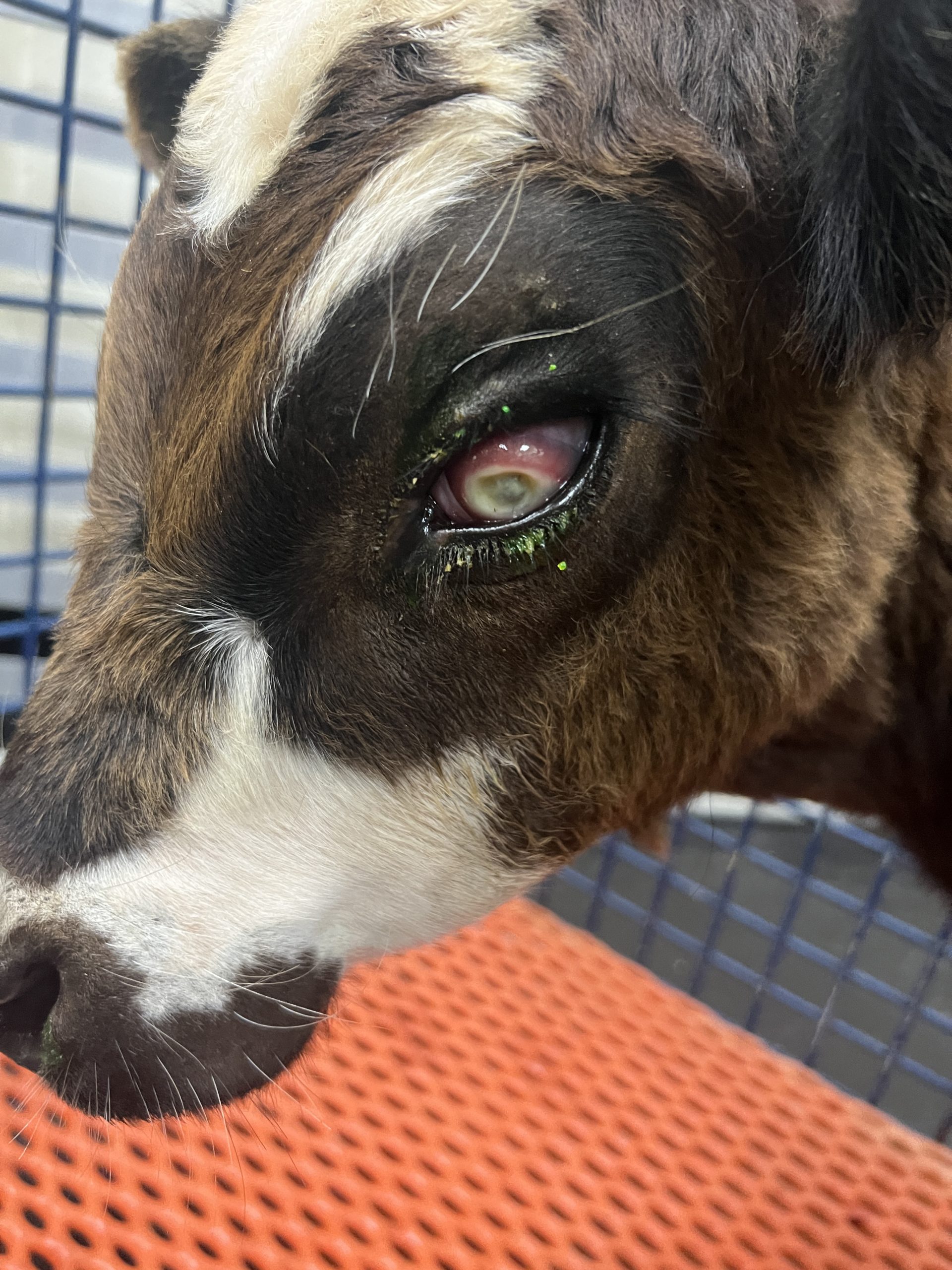Pinkeye—an infection that can spread like wildfire

It’s a dreaded sight when calves meander up to the water tank with inflamed eyes and discharge streaming down their cheeks—no one relishes a breakout of pinkeye in their herd and while it is sometimes unavoidable, there are strategies to minimize the number of cases and hinder the condition from spreading.
Dr. Rosslyn Biggs, DVM, beef cattle Extension specialist and director of continuing education at Oklahoma State University College of Veterinary Medicine, said pinkeye is most often seen in the summer and fall. Also known as infectious bovine keratoconjunctivitis, pinkeye is most common during this time because of a plethora of eye irritants that can lead to infection.
Biggs said these factors include extreme sunlight, flies, wind, dust, pollen, grasses with prominent grass awns, and hay. She said hay can be especially problematic when cattle are eating from overhead feeders or sticking their head in a round bale, which can irritate eyes.
“However, pinkeye can be seen year-round especially if cattle are stressed,” Biggs added. “Stressful events may include weaning, high stocking rates, and increased feeding of hay where cattle often have to compete for nutrition.”
Biggs said the primary symptoms of pinkeye include: redness and swelling of tissues around the globe of the eyeball; watery eyes; discharge from eyes; squinting or rapid blinking; discolored cornea on the outer surface of the globe—often with a blue, white, or greyish appearance initially with reddened areas as disease progresses; corneal ulceration—which may look like a hole in the cornea; decreased appetite due to pain, low grade fever and in severe cases blindness and loss of the globe. Biggs said pinkeye is rarely isolated to one animal and is usually a herd problem.
“Flies, especially face flies, help spread the main causative bacteria, Moraxella bovis, from animal to animal,” she explained. “Secretions from the eyes and nose can also be spread through direct contact and on objects.”
Pinkeye is extremely contagious and infected animals should be isolated upon diagnosis. Furthermore, she said carrier cattle that have contracted pinkeye and recovered can maintain the bacteria in their noses and eyes and spread the infection. Biggs said young cattle that have not been exposed to the causative bacteria as well as cattle with white pigmentation surrounding their eyes are more susceptible to pinkeye. Once an animal is suspected to have pinkeye, Biggs said the eye should be thoroughly examined for any foreign bodies.
“A common cause of trauma to the eye may be a grass awn stuck behind the third eyelid that rubs against the cornea,” she explained. The next step is to administer antibiotics and pain medications at the direction of a veterinarian. She said in some cases, veterinarians
may apply eye patches or sew the eyelids shut to protect the eye from further damage. Producers are also advised to improve environmental factors that proliferate pinkeye outbreaks. Biggs said this includes providing shade and windbreaks, controlling flies, limiting dust and pollen, mowing pastures and altering the way hay is fed so it will not irritate eyes.
To prevent or slow down a pinkeye epidemic within a herd, Biggs recommends producers monitor cattle on a regular basis; isolate new animals, quarantine infected animals as soon as symptoms are observed; limit stress of cattle and develop a herd health plan in conjunction with a veterinarian and nutritionist.
“Vaccination may or may not prove helpful,” Biggs said. “Routine vaccination for pinkeye is not part of most herd health plans. If vaccination is chosen during an outbreak situation, best results are when a customized vaccine, called an autogenous vaccine, is created for the herd. Producers should consult with their local veterinarian on the use of vaccination in their area.”
Lacey Vilhauer can be reached at 620-227-1871 or [email protected].



